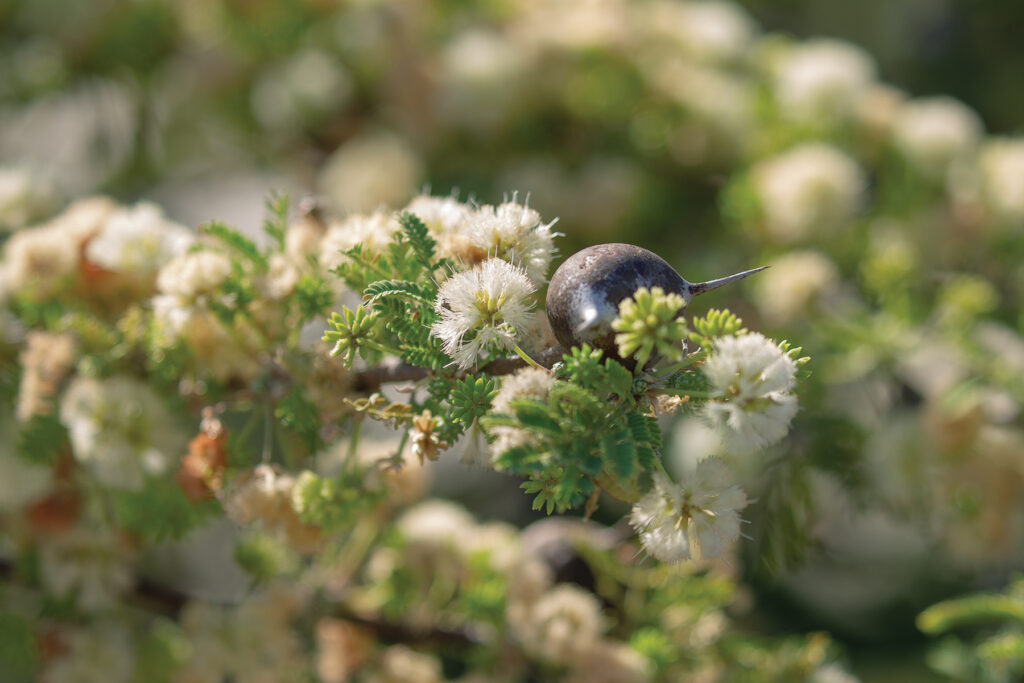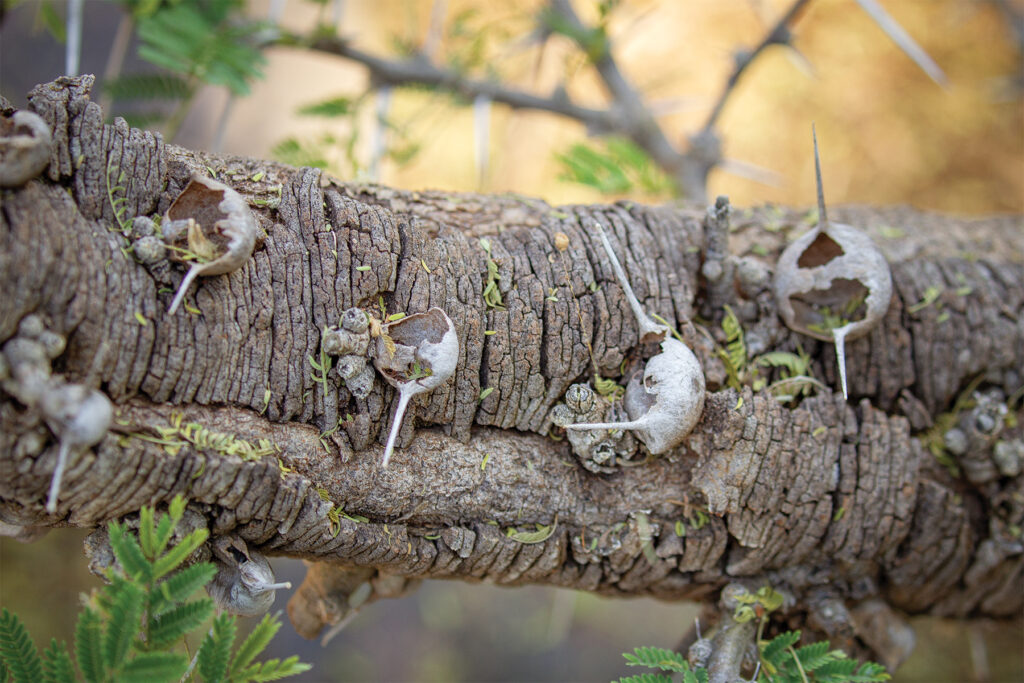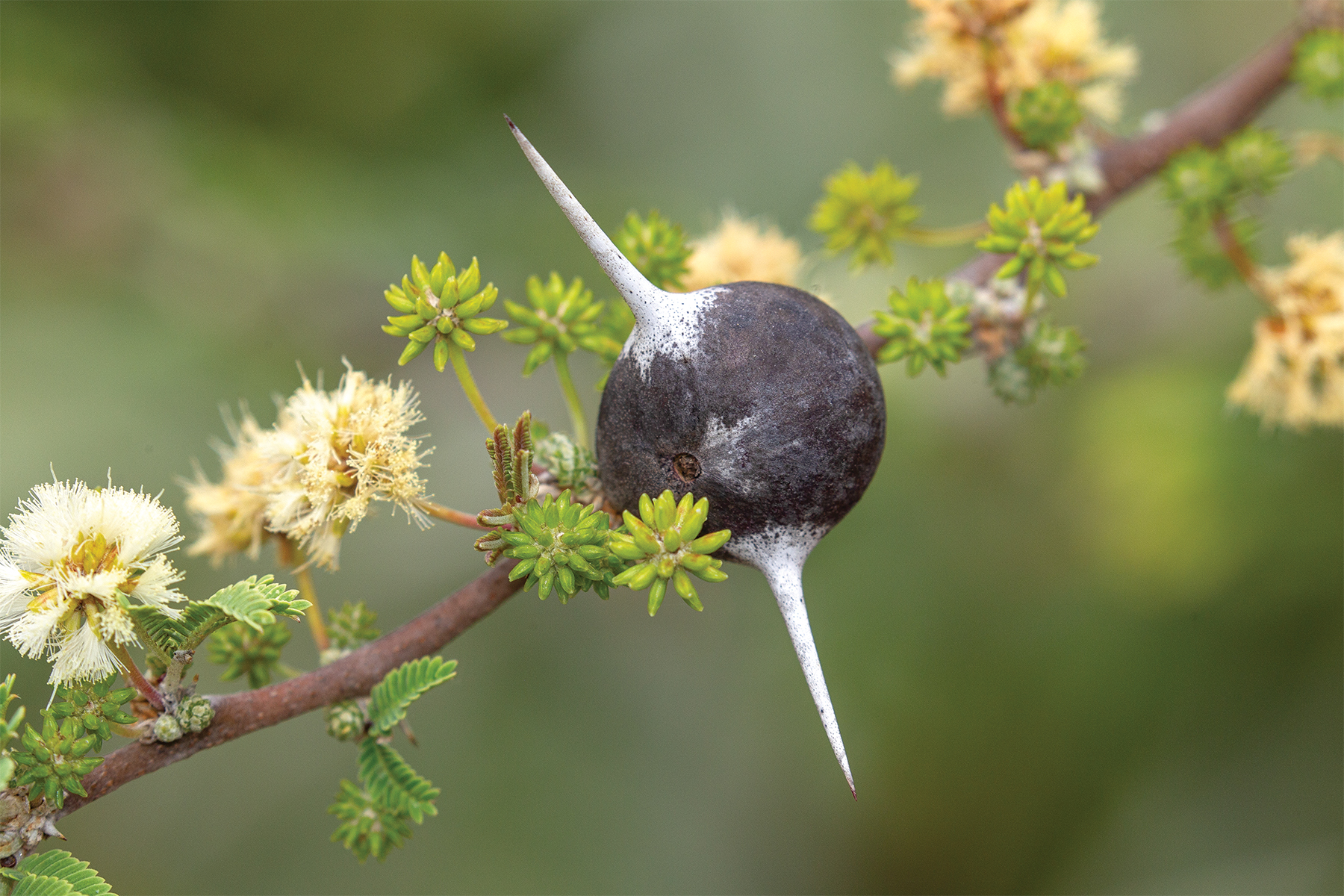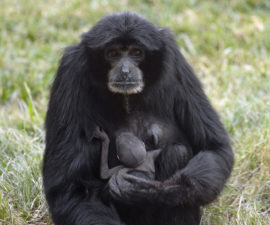BY Peggy Scott
Whistling Thorn Trees and the Sound of Symbiosis on the Savanna
Native to the savannas of Africa and commonly found in the Serengeti, the whistling thorn tree Vachellia drepanolobium is a tall (up to 18 feet), swollen-thorn acacia. Its hardy, termite-proof wood can be used to make tool handles and fencing, or for kindling; and the gum is sometimes collected for use as glue. Adorned with small white flowers, the whistling thorn sports leaves comprised of tiny leaflets, as well as seed pods and, most notably, three-inch-long spikes on its branches. Sprinkled throughout the leaflets are modified thorns, called stipular spines, which are joined at the base by large, hollow bulbs—about one inch in diameter—called domatia.

As with other African acacias, these thorns serve as protection from the hungry mouths of herbivores like giraffes and elephants. But should an animal find those tasty morsels irresistible, the whistling thorn has a secret weapon in those round, empty spheres—thousands of them, in fact: ants!
Scurrying Security System
Within the swollen thorn bulbs of the whistling thorn tree, four ant species— Crematogaster nigriceps, C. mimosae, C. sjostedti, and Tetraponera penzigi—have made themselves right at home. They bore holes into the bulbs and settle in, enjoying shelter and the nectar the trees provide. When the wind blows, the spiky appendages become natural whistles, resulting in the sound that gives the tree its common name. But the ants aren’t just providing a soundtrack to the tree’s life; they defend the whistling thorn against tree-grazing mammals. When a branch is disturbed, ants swarm out of the holes—into the mouths and up the noses of the unlucky nibblers.

This home security system is crucial, because, unlike other acacia trees, the whistling thorn tree doesn’t have toxic chemicals that would keep snackers at bay. In exchange, the ants have access to the tree’s nectar, and a safe place to live. It’s a win-win situation, notes Adam Graves, director of horticulture at the San Diego Zoo. “The way these organisms have evolved to help each other survive shows firsthand the amazing symbiotic relationships that can evolve in nature,” Adam explains. “These iconic trees in the landscape have an amazing story, and we’re lucky to be able to share them with our visitors!”
Come see—and perhaps hear—for yourself. At the Zoo, a whistling thorn tree lives in Africa Rocks, and at the San Diego Zoo Safari Park, one has put down roots at the Fishing Village Bridge at Mombasa Lagoon.





